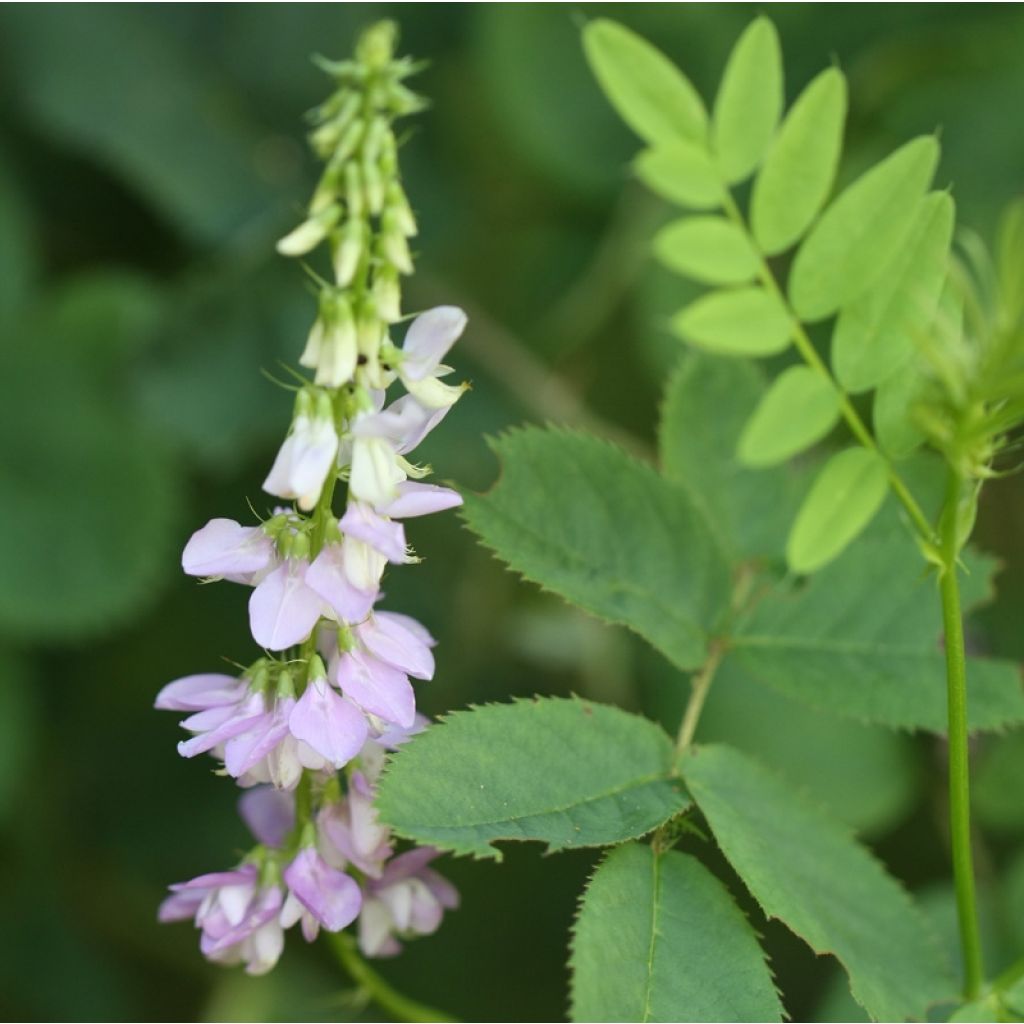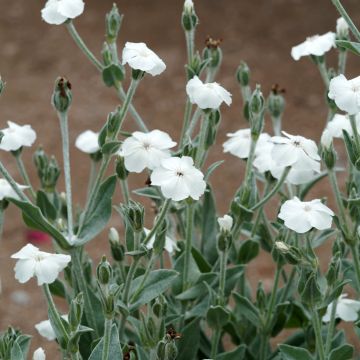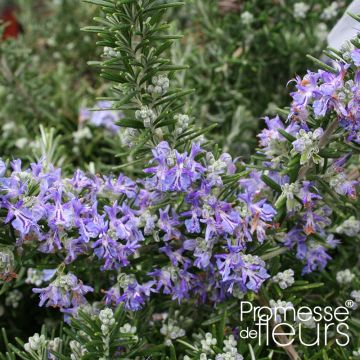

Galega hartlandii Duchess of Bedford


Galega hartlandii Duchess of Bedford
Galega hartlandii Duchess of Bedford
Galega x hartlandii Duchess of Bedford
Hartland's Goat's Rue
Develops very quickly forming a bush with a flower stalk++++ stems that tend to lie down.
Cecile D., 25/07/2018
Special offer!
Receive a €20 voucher for any order over €90 (excluding delivery costs, credit notes, and plastic-free options)!
1- Add your favorite plants to your cart.
2- Once you have reached €90, confirm your order (you can even choose the delivery date!).
3- As soon as your order is shipped, you will receive an email containing your voucher code, valid for 3 months (90 days).
Your voucher is unique and can only be used once, for any order with a minimum value of €20, excluding delivery costs.
Can be combined with other current offers, non-divisible and non-refundable.
Why not try an alternative variety in stock?
View all →This plant carries a 12 months recovery warranty
More information
We guarantee the quality of our plants for a full growing cycle, and will replace at our expense any plant that fails to recover under normal climatic and planting conditions.
Would this plant suit my garden?
Set up your Plantfit profile →
Description
Galega hartlandii Duchess of Bedford is a stunning perennial plant, robust and carefree, quickly forming a huge bushy clump, with decorative light green foliage, and a very long and generous flowering in pale pink, scented during the summer. A rural giant that will bring a touch of the countryside to the garden!
The Galega, commonly known as Goat's Rue, is native to southern Europe and western Asia and belongs to the Papilionaceae family. The Galega hartlandii Duchess of Bedford is a fast-growing herbaceous perennial, with great vigour and an imposing size, measuring approximately 1.20m (4ft) in height and 50-60cm (20-24in) in spread. It quickly forms a huge upright and bushy clump. Its deciduous foliage is composed of beautiful pinnate leaves, measuring 8 to 20cm (3 to 8in) long, in a beautiful light green colour. Very floriferous over a long period, it displays, on tall well-branched stems, from June to September, large upright clusters of butterfly-like flowers, in a delightful pale pink colour, slightly scented. Their scent is reminiscent of coconut.
This Galega, extremely hardy and easy to grow, will thrive in any good moist garden soil in a sunny location. With its large dimensions and abundant and long-lasting summer flowering, it will be perfect for enhancing and animating a border or a flower bed, when planted in the background. Requiring space, it is advisable to leave about 50cm (20in) of space around its base, so that it can flourish without encroaching on other perennials. A plant with a resolutely wild appearance, this Galega is perfectly suited to less maintained areas of the garden or country gardens, especially since it readily self-seeds. It pairs well with other carefree and countryside-looking perennials, such as Daylilies, Daisies, Grasses, Japanese Anemones, Foxgloves, Delphiniums... It can also be planted at the base of a Climbing Rose or a Clematis to enhance their base. Its flowering stems make beautiful countryside bouquets, delicately scented.
The term Galega is derived from the Greek word gala, which means milk, referring to the lactogenic properties of Galega flowers, used in herbal medicine to promote milk production in women. Goats appreciate their foliage, hence its common name Goat's Rue.
Galega hartlandii Duchess of Bedford in pictures




Flowering
Foliage
Plant habit
Botanical data
Galega
x hartlandii
Duchess of Bedford
Fabaceae
Hartland's Goat's Rue
Cultivar or hybrid
Other Perennials A to Z
View all →Planting and care
Galega hartlandii Duchess of Bedford is a giant, robust and floriferous perennial, very easy to grow and well suited for beginner gardeners. Perfectly hardy, it appreciates an open exposure, in sunny or semi-shaded position, as well as ordinary, well-drained but moist soil, even during the summer. In rich soil, it may tend to become invasive, and its tall flower stems may sometimes need support. Low maintenance, it is enough to cut the faded stems at ground level. However, it is possible to leave the withered flower spikes to obtain spontaneous sowings and allow it to naturalize in the garden. At the beginning of winter, cut back the clump to 1cm (1in) above the ground.
Planting period
Intended location
Care
Planting & care advice
-
, onOrder confirmed
Reply from on Promesse de fleurs
Similar products
Haven't found what you were looking for?
Hardiness is the lowest winter temperature a plant can endure without suffering serious damage or even dying. However, hardiness is affected by location (a sheltered area, such as a patio), protection (winter cover) and soil type (hardiness is improved by well-drained soil).

Photo Sharing Terms & Conditions
In order to encourage gardeners to interact and share their experiences, Promesse de fleurs offers various media enabling content to be uploaded onto its Site - in particular via the ‘Photo sharing’ module.
The User agrees to refrain from:
- Posting any content that is illegal, prejudicial, insulting, racist, inciteful to hatred, revisionist, contrary to public decency, that infringes on privacy or on the privacy rights of third parties, in particular the publicity rights of persons and goods, intellectual property rights, or the right to privacy.
- Submitting content on behalf of a third party;
- Impersonate the identity of a third party and/or publish any personal information about a third party;
In general, the User undertakes to refrain from any unethical behaviour.
All Content (in particular text, comments, files, images, photos, videos, creative works, etc.), which may be subject to property or intellectual property rights, image or other private rights, shall remain the property of the User, subject to the limited rights granted by the terms of the licence granted by Promesse de fleurs as stated below. Users are at liberty to publish or not to publish such Content on the Site, notably via the ‘Photo Sharing’ facility, and accept that this Content shall be made public and freely accessible, notably on the Internet.
Users further acknowledge, undertake to have ,and guarantee that they hold all necessary rights and permissions to publish such material on the Site, in particular with regard to the legislation in force pertaining to any privacy, property, intellectual property, image, or contractual rights, or rights of any other nature. By publishing such Content on the Site, Users acknowledge accepting full liability as publishers of the Content within the meaning of the law, and grant Promesse de fleurs, free of charge, an inclusive, worldwide licence for the said Content for the entire duration of its publication, including all reproduction, representation, up/downloading, displaying, performing, transmission, and storage rights.
Users also grant permission for their name to be linked to the Content and accept that this link may not always be made available.
By engaging in posting material, Users consent to their Content becoming automatically accessible on the Internet, in particular on other sites and/or blogs and/or web pages of the Promesse de fleurs site, including in particular social pages and the Promesse de fleurs catalogue.
Users may secure the removal of entrusted content free of charge by issuing a simple request via our contact form.
The flowering period indicated on our website applies to countries and regions located in USDA zone 8 (France, the United Kingdom, Ireland, the Netherlands, etc.)
It will vary according to where you live:
- In zones 9 to 10 (Italy, Spain, Greece, etc.), flowering will occur about 2 to 4 weeks earlier.
- In zones 6 to 7 (Germany, Poland, Slovenia, and lower mountainous regions), flowering will be delayed by 2 to 3 weeks.
- In zone 5 (Central Europe, Scandinavia), blooming will be delayed by 3 to 5 weeks.
In temperate climates, pruning of spring-flowering shrubs (forsythia, spireas, etc.) should be done just after flowering.
Pruning of summer-flowering shrubs (Indian Lilac, Perovskia, etc.) can be done in winter or spring.
In cold regions as well as with frost-sensitive plants, avoid pruning too early when severe frosts may still occur.
The planting period indicated on our website applies to countries and regions located in USDA zone 8 (France, United Kingdom, Ireland, Netherlands).
It will vary according to where you live:
- In Mediterranean zones (Marseille, Madrid, Milan, etc.), autumn and winter are the best planting periods.
- In continental zones (Strasbourg, Munich, Vienna, etc.), delay planting by 2 to 3 weeks in spring and bring it forward by 2 to 4 weeks in autumn.
- In mountainous regions (the Alps, Pyrenees, Carpathians, etc.), it is best to plant in late spring (May-June) or late summer (August-September).
The harvesting period indicated on our website applies to countries and regions in USDA zone 8 (France, England, Ireland, the Netherlands).
In colder areas (Scandinavia, Poland, Austria...) fruit and vegetable harvests are likely to be delayed by 3-4 weeks.
In warmer areas (Italy, Spain, Greece, etc.), harvesting will probably take place earlier, depending on weather conditions.
The sowing periods indicated on our website apply to countries and regions within USDA Zone 8 (France, UK, Ireland, Netherlands).
In colder areas (Scandinavia, Poland, Austria...), delay any outdoor sowing by 3-4 weeks, or sow under glass.
In warmer climes (Italy, Spain, Greece, etc.), bring outdoor sowing forward by a few weeks.






































































